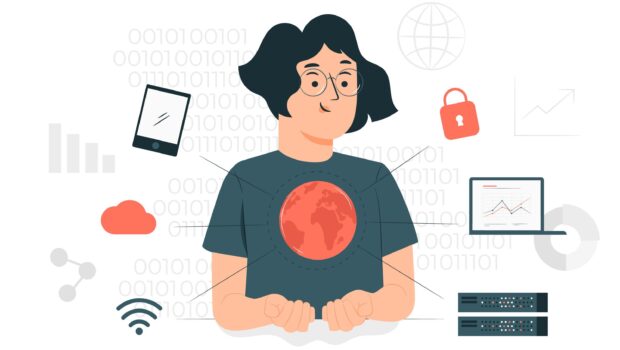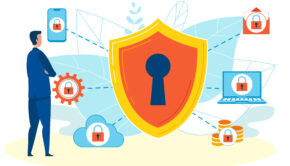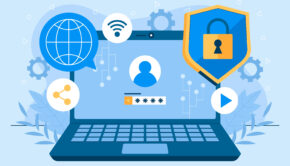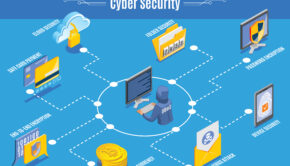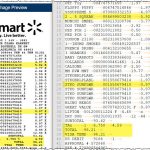Best Secure Remote Access Solutions for Businesses
In the ever-evolving landscape of the modern workplace, remote access solutions have become integral for businesses aiming to provide flexibility to their workforce. However, with the increasing threat landscape, ensuring the security of remote access is paramount. This article delves into the best secure remote access solutions for businesses, exploring their features, benefits, and how they contribute to safeguarding sensitive information in an era where cyber threats are ever-present.
The Growing Importance of Secure Remote Access
As businesses embrace the concept of remote work, the need for secure remote access solutions has surged. Traditional methods are no longer sufficient to protect sensitive data from cyber threats. The advent of cloud computing and the proliferation of mobile devices have made remote access an indispensable part of daily operations. Consequently, businesses are actively seeking robust solutions that can provide secure access without compromising data integrity.
VPNs (Virtual Private Networks)
Virtual Private Networks (VPNs) have long been a staple in securing remote access. VPNs create an encrypted tunnel between the user’s device and the corporate network, ensuring that data transmitted is secure from potential eavesdropping. They are a versatile solution that can be implemented across various devices and operating systems.
a. Notable VPN Solutions:
i. Cisco AnyConnect
ii. ExpressVPN
iii. NordVPN
b. Features and Benefits:
i. Encryption Protocols
ii. Multi-Factor Authentication (MFA)
iii. Split Tunneling
iv. User Authentication Controls
Zero Trust Network Access (ZTNA)
The Zero Trust model is gaining traction as a proactive approach to network security. Zero Trust Network Access (ZTNA) assumes that no user or device, even those within the corporate network, can be trusted by default. It verifies the identity of users and devices before granting access to resources, minimizing the attack surface.
a. Leading ZTNA Solutions:
i. Zscaler Private Access
ii. Palo Alto Networks Prisma Access
iii. Akamai Enterprise Application Access
b. Features and Benefits:
i. Identity-Centric Access
ii. Continuous Monitoring
iii. Micro-Segmentation
iv. Policy-Based Access Controls
IV. Secure Remote Desktop Solutions:
Secure Remote Desktop solutions allow users to access their work desktops from any location securely. These solutions facilitate remote access without compromising the security of the organization’s network.
a. Prominent Remote Desktop Solutions:
i. Microsoft Remote Desktop
ii. TeamViewer
iii. AnyDesk
b. Features and Benefits:
i. End-to-End Encryption
ii. Session Recording and Logging
iii. Clipboard Redirection Controls
iv. Multi-Monitor Support
V. Cloud-Based Solutions
As businesses increasingly migrate to cloud-based infrastructures, cloud-native remote access solutions have gained prominence. These solutions offer scalability, flexibility, and enhanced security, making them a compelling choice for many organizations.
a. Notable Cloud-Based Solutions:
i. AWS Client VPN
ii. Google Cloud Identity-Aware Proxy
iii. Microsoft Azure Virtual Network
b. Features and Benefits:
i. Scalability
ii. Integrated Security Services
iii. User and Device Identity Management
iv. Global Reach
VI. Endpoint Security and Management
Securing remote access is not solely about network infrastructure; it also involves protecting endpoints. Endpoint security solutions play a crucial role in safeguarding devices that connect remotely to the corporate network.
a. Endpoint Security Solutions:
i. CrowdStrike Falcon
ii. Symantec Endpoint Protection
iii. McAfee Endpoint Security
b. Features and Benefits:
i. Anti-Malware Protection
ii. Device Encryption
iii. Endpoint Detection and Response (EDR)
iv. Mobile Device Management (MDM)
VII. Security Best Practices for Remote Access
Implementing secure remote access solutions is just the beginning. To fortify the organization against cyber threats, businesses must adhere to a set of best practices:
a. Regular Security Audits and Assessments
b. Employee Training and Awareness Programs
c. Strict Access Control Policies
d. Regular Software Updates and Patch Management
e. Incident Response Plans
Conclusion
As businesses continue to embrace remote work, the importance of secure remote access solutions cannot be overstated. The landscape is diverse, offering a range of options from traditional VPNs to cutting-edge Zero Trust Network Access solutions. The key is to choose a solution that aligns with the organization’s needs, ensuring a balance between security, usability, and scalability. By adopting and implementing these secure remote access solutions, businesses can empower their remote workforce while safeguarding sensitive data in an increasingly interconnected and digital world.
Cover Image by Freepik

